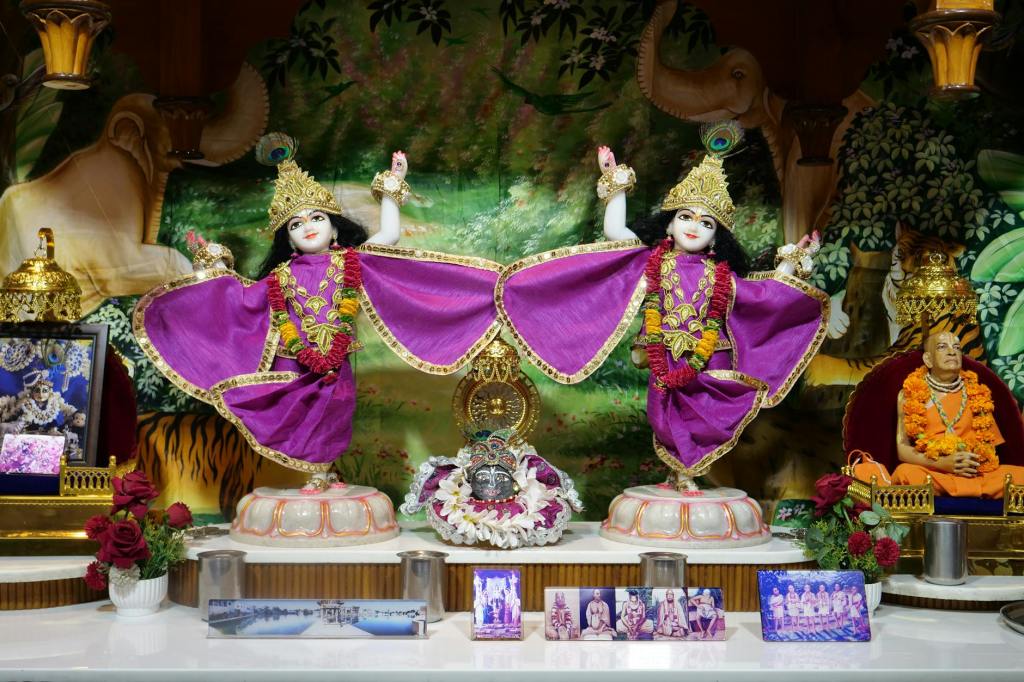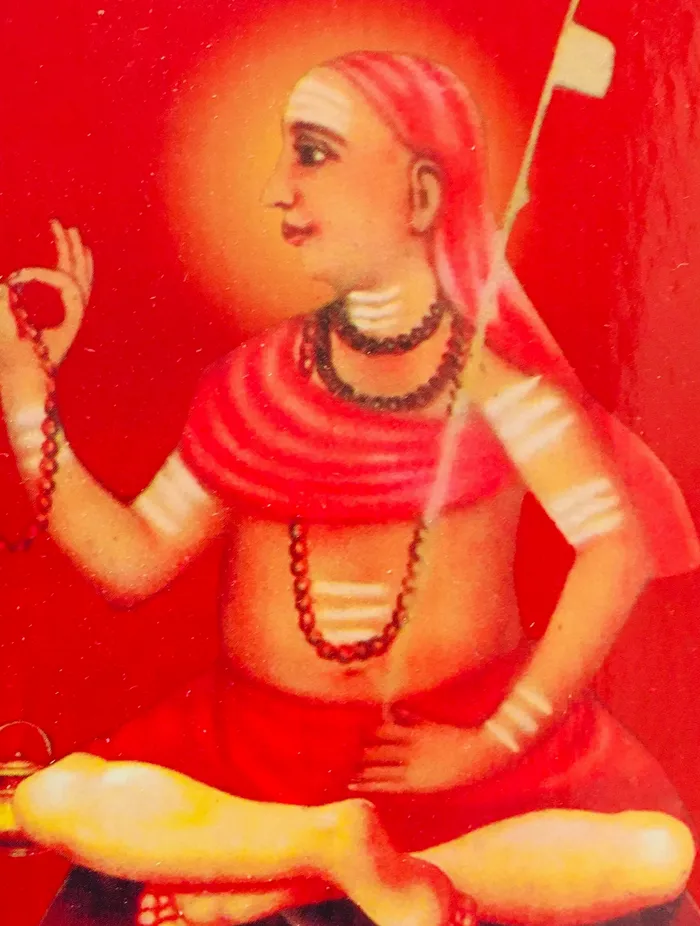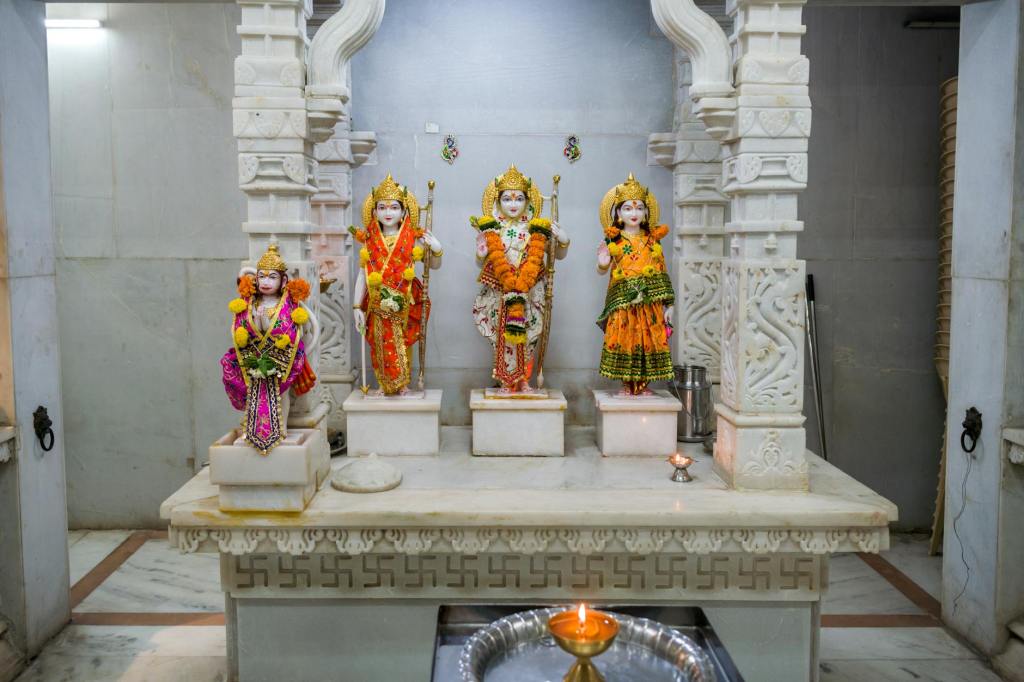- What is Bhakti or devotion to god?
- Importance of Bhakti Yoga in Hinduism
- Types of Bhakti in Hinduism
- Bhakti Yoga in Bhagavad Gita
- Bhakti Marga Rules
- Verses from Bhagavad Gita on Bhakti Yoga
- References
What is Bhakti or devotion to god?
Bhakti is popularly known as emotional devotionalism. Love for material matters is attachment, whereas attachment with god is bhakti or devotion. In short, bhakti is love, the love that sustains the mutual relationship between the seeker and his personal god. Bhakti has been expounded in several texts of which the most famous are Bhagavad Git, Srimad Bhagavatam, Narada Bhakti Sutra and Shandilya Bhakti Sutra. This article primarily relies on the Gita and parts of Bhagavatam to propound the basic tenets of this spiritual path to liberation.
Importance of Bhakti Yoga in Hinduism
That of Bhakti is the easiest of all. A mother doesn’t need practice or training to be able to constantly think of her baby. This is possible because of the strong emotional bond of love. Likewise, a devotee can easily develop an intense bond with his or her personal god. The bond could be based on love, friendship, servitude, etc. It’s also said someone hating the god with intense aversion, like Hiranyakashipu or Kamsa, is also a great beneficiary of the vidvesha-bhava. More than a mother thinks of her baby, a person thinks of someone he apprehends. These characters who had intense enmity with the lord, got instant liberation when they were slain.
In the Kali yuga, the other paths for salvation prove to be extremely difficult. We’re constantly entangled in a lot of activities, lead busy lives, have numerous commitments and therefore it becomes tough to take out time to perform activity-oriented rituals or rites. Even for such seekers, there is a way out. Bhakti is something one can practice, without giving up anything that we currently do due to the compulsions of the modern-day life. Whether you’re driving, cooking, or exercising, one can chant the name of the lord. While working, one can remind oneself that his work-output is an offering unto the lord. While receiving a guest at home, one can look at the guests at the Lord himself and welcome them with all pomp and joy and feed them delicacies. While waiting at a bus stop, one could feed the stray dogs, by looking at them as the Lord’s own. If there’s a troubling neighbor, one could look at him also as the Lord’s own and try to overcome the aversion one had developed. Thus, everything one does, thinks and speaks, is directly or indirectly connected to the Lord. This every action becomes an offering unto the Lord. This is a very easy and practical way to cultivate devotion and practise bhakti.
Types of Bhakti in Hinduism
Bhakti can be classified based on 1) the object of bhakti, 2) the key activity it involves and 3) the attitude or emotion it invokes in the devotee.
Classification based on the object
According to Ramana Maharishi, states David Frawley, bhakti is a “surrender to the divine with one’s heart”. It can be practiced as an adjunct to self-inquiry, and in one of four ways:
- Atma-Bhakti: devotion to the one’s self (atma)
- Ishvara-Bhakti: devotion to a formless being (God, Cosmic Lord)
- Ishta Devata-Bhakti: devotion to a personal God or goddess
- Guru-Bhakti: devotion to Guru
Navda Bhakti – Navavidha or Navadhaa Bhakti – 9 types of devotion
This is a classification based on a mix of both the activity involved as well as the attitude of the devotee while performing bhakti. Based on natural tendencies of the seeker, one may be inclined to any one or many of the following 9 activities of bhakti. These can also be interpreted as the various stages of bhakti. These 9 types of devotion are described by Prahlada in Srimad Bhagavatam.
श्रवणं कीर्तनं विष्णोः स्मरणं पादसेवनम् ।
Verse from Srimad Bhagavatam – navavidha bhakti
अर्चनं वन्दनं दास्यं सख्यमात्मनिवेदनम् ॥
- śravaṇa – listening to ancient texts or the stories of the Lord
- kīrtana – praying or chanting the Lord’s names
- smaraṇa – remembering the Lord and his glory continuously, recollecting teachings in ancient texts etc.
- pāda-sevana – service to the lotus feet of the Lord
- archana – worshiping the Lord by performing rituals, offering flowers, food etc.
- vandana – bowing to the divine, prostrating, circumambulating etc.
- dāsya – being a servant to the Lord
- sākhya – being a friend of the Lord
- ātma-nivedana – unconditional self-surrender to the Lord
The third classification, based on the attitude/emotion invoked in the devotee according to one’s temperament, divides devotion into 5 major emotions:
- śānta, placid love for God; Bhishma was a perfect example of shanta bhava. He had all his emotions under control. He was a ruler of his emotions.
- dāsya, the attitude of a servant; Hanuman towards lord Rama
- sakhya, the attitude of a friend; shepherd boys of Vrindavan towards Krishna
- vātsalya, the attitude of a mother towards her child; Yashoda, who looked after Krishna
- madhurya, the attitude of a woman towards her lover. Radha towards Krishna
Bhakti Yoga in Bhagavad Gita
The 12th chapter of the Gita is called Bhakti Yoga or the way of devotion. This chapter begins with an earnest question from Arjuna to Krishna, “Who is better placed between the devotees and the yogis?” Krishna says both reach the same destination, and subsequently elaborates on the nuances of the many paths. A devotee worships the form, whereas the other worships the inconceivable. But both attain liberation. It’s just the latter is the riskier route; in that it has more obstacles.
Lord Krishna goes on to share a sort of decision tree that describes the what a seeker could possibly do, depending on one’s capabilities.

Lord Krishna tells Arjuna which methods are superior. Out of the 4 methods mentioned by Lord Krishna, the path of knowledge comes about as the least superior. This shouldn’t be taken literally. The word ‘superiority’ in this context means the level of ease with which a seeker could adopt the method or path. The path of knowledge (Jnana) is prescribed for those who have already developed a sufficient level of dispassion towards worldly affairs and may be difficult for someone who doesn’t qualify. Thus, it’ll be fair to say that the list given below contains 4 methods, that are arranged in an increasing order of ease of practice.

Bhakti Marga Rules
The path of devotion is also called as bhakti marga. In the 12th chapter of the Gita, Lord Krishna advises Arjuna that the devotees who practise this path are extremely dear to him. Although there are no hard and fast rules for performing bhakti, there are some qualitative traits that one must possess to be called a true devotee or to be able to succeed in the spiritual pursuit. Some important characteristics that qualify someone as a devotee/bhakta are:
- Absence of envy
- Friendly nature
- Compassion towards all beings
- Absence of ego or “I” consciousness
- Indifference to pain and pleasure
- Forgivingness
- Contentment
- Contemplative nature
- Self-control
- Absence of elation jealousy fear and anxiety
- Independence, cleanliness, dexterity, indifference, being untroubled and ability to discard all endeavors
Here’s another article from TheCowherd on the benefits of chanting Vishnu Sahasranama.
Verses from Bhagavad Gita on Bhakti Yoga
All the 20 verses spoken by the lord are shared below. This is a short chapter in which all the verses are very important.
श्रीभगवानुवाच ।
मय्यावेश्य मनो ये मां नित्ययुक्ता उपासते ।
श्रद्धया परयोपेताः ते मे युक्ततमा मताः ॥ १२-२॥
ये त्वक्षरमनिर्देश्यमव्यक्तं पर्युपासते ।
सर्वत्रगमचिन्त्यञ्च कूटस्थमचलन्ध्रुवम् ॥ १२-३॥
सन्नियम्येन्द्रियग्रामं सर्वत्र समबुद्धयः ।
ते प्राप्नुवन्ति मामेव सर्वभूतहिते रताः ॥ १२-४॥
क्लेशोऽधिकतरस्तेषामव्यक्तासक्तचेतसाम् ।
अव्यक्ता हि गतिर्दुःखं देहवद्भिरवाप्यते ॥ १२-५॥
ये तु सर्वाणि कर्माणि मयि संन्यस्य मत्पराः ।
अनन्येनैव योगेन मां ध्यायन्त उपासते ॥ १२-६॥
तेषामहं समुद्धर्ता मृत्युसंसारसागरात् ।
भवामि नचिरात्पार्थ मय्यावेशितचेतसाम् ॥ १२-७॥
मय्येव मन आधत्स्व मयि बुद्धिं निवेशय ।
निवसिष्यसि मय्येव अत ऊर्ध्वं न संशयः ॥ १२-८॥
अथ चित्तं समाधातुं न शक्नोषि मयि स्थिरम् ।
अभ्यासयोगेन ततो मामिच्छाप्तुं धनञ्जय ॥ १२-९॥
अभ्यासेऽप्यसमर्थोऽसि मत्कर्मपरमो भव ।
मदर्थमपि कर्माणि कुर्वन्सिद्धिमवाप्स्यसि ॥ १२-१०॥
अथैतदप्यशक्तोऽसि कर्तुं मद्योगमाश्रितः ।
सर्वकर्मफलत्यागं ततः कुरु यतात्मवान् ॥ १२-११॥
श्रेयो हि ज्ञानमभ्यासाज्ज्ञानाद्ध्यानं विशिष्यते ।
ध्यानात्कर्मफलत्यागस्त्यागाच्छान्तिरनन्तरम् ॥ १२-१२॥
अद्वेष्टा सर्वभूतानां मैत्रः करुण एव च ।
निर्ममो निरहङ्कारः समदुःखसुखः क्षमी ॥ १२-१३॥
सन्तुष्टः सततं योगी यतात्मा दृढनिश्चयः ।
मय्यर्पितमनोबुद्धिर्यो मद्भक्तः स मे प्रियः ॥ १२-१४॥
यस्मान्नोद्विजते लोको लोकान्नोद्विजते च यः ।
हर्षामर्षभयोद्वेगैर्मुक्तो यः स च मे प्रियः ॥ १२-१५॥
अनपेक्षः शुचिर्दक्ष उदासीनो गतव्यथः ।
सर्वारम्भपरित्यागी यो मद्भक्तः स मे प्रियः ॥ १२-१६॥
यो न हृष्यति न द्वेष्टि न शोचति न काङ्क्षति ।
शुभाशुभपरित्यागी भक्तिमान्यः स मे प्रियः ॥ १२-१७॥
समः शत्रौ च मित्रे च तथा मानापमानयोः ।
शीतोष्णसुखदुःखेषु समः सङ्गविवर्जितः ॥ १२-१८॥
तुल्यनिन्दास्तुतिर्मौनी सन्तुष्टो येन केनचित् ।
अनिकेतः स्थिरमतिर्भक्तिमान्मे प्रियो नरः ॥ १२-१९॥
ये तु धर्म्यामृतमिदं यथोक्तं पर्युपासते ।
श्रद्दधाना मत्परमा भक्तास्तेऽतीव मे प्रियाः ॥ १२-२०॥
– Srimad Bhagavad Gita| Chapter 12






3 responses to “Bhakti Yoga”
[…] are an impurity of mind. The impurities are overcome with a process of self-examination, devotion (bhakti yoga), selfless action (karma-yoga) or knowledge of self […]
LikeLike
[…] There are several methods to attaining liberation. The Cowherd has covered the three paths mentioned in the Bhagavad Gita in separate blogs namely, Karma Yoga, Jnana Yoga and Bhakti Yoga. […]
LikeLike
[…] a state of perfect unity with the ultimate reality.In Bhagavad Gita, Krishna also emphasizes on devotion and surrender to God as a path to attain liberation. He states that one who surrenders to God and […]
LikeLike